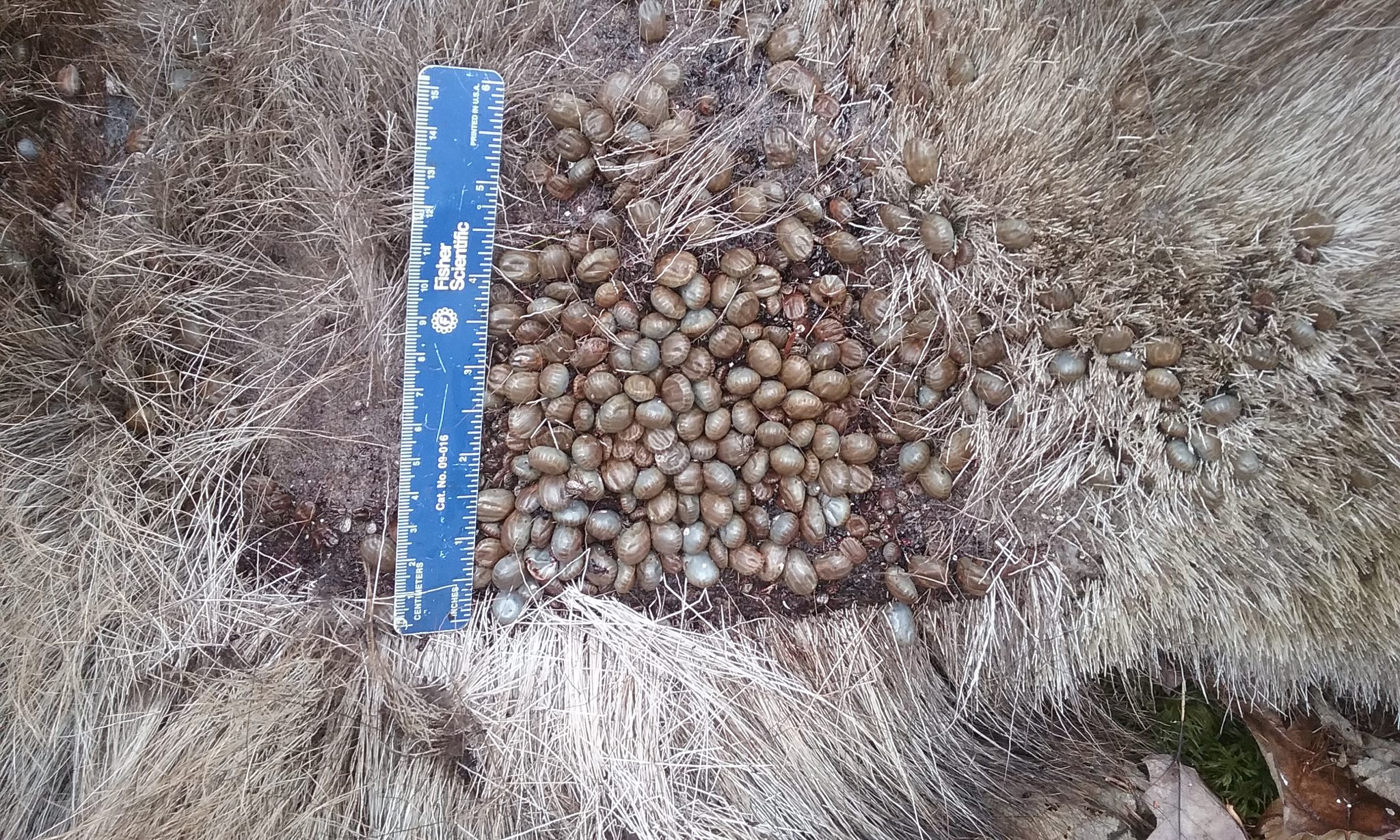

Winter ticks are killing moose throughout New England in alarming numbers, latching onto their hosts by the 1000’s and draining a lot blood that the animals have been described as “zombies” earlier than they collapse from anemia. With hotter summers, shorter winters, and fewer snow cowl, these vampire-like parasites are thriving, spreading throughout New England and threatening the way forward for one of many area’s most iconic species.
Winter ticks, often known as moose ticks (Dermacentor albipictus), are exterior parasites that connect to the pores and skin of their hosts. Whereas they do feed on different species, winter ticks primarily goal moose, latching on within the fall and feeding all through the winter. Infestations can attain as much as a staggering 90,000 ticks per animal.
In contrast to deer ticks or canine ticks, which hunt for his or her hosts individually, winter ticks find their victims by a technique known as “questing.” They interlock limbs, teaming as much as kind clumps of 1000’s. When one tick manages to climb aboard an unsuspecting warm-blooded passerby, all of them embark collectively.
Though winter ticks solely measure a couple of quarter-inch in size, they discover power in numbers, bringing 750-pound beasts to their knees. An infestation of those tiny ticks could cause hair loss, anemia, and extreme weight reduction.
“They endure horrible, gradual deaths,” Josh Bluin, a wildlife biologist with the Vermont Fish and Wildlife Division, instructed Wired. “These majestic animals are curled up, pores and skin and bones. It’s a tragic sight.”
Whereas a wholesome grownup moose might be able to survive a blood-sucking load of ticks, small calves are one other story. Research have proven calf mortality rates as excessive as 86 % in elements of Maine resulting from winter tick infestations.
Pregnant cows additionally endure from tick overload, rising from winter bodily depleted and fewer fertile, in response to Bluin. Vermont has skilled a forty five % decline in its moose inhabitants over the previous decade, a discount attributed primarily to winter ticks.
As a result of winter ticks thrive in areas with excessive moose densities, decreasing herd numbers may result in more healthy moose populations. In response, some states have turned to what looks like a Hail Mary transfer — looking extra moose.
In hopes of breaking the tick infestation cycle, Maine elevated the variety of cow permits issued in its core moose vary. New Hampshire employed an identical technique, including to the variety of moose permits obtainable within the state.
It could appear counterintuitive, however biologists say it’s a vital trade-off: fewer moose, however stronger survivors.
“I assume that’s the talk,” subject biologist Eric Orff instructed the New Hampshire Bulletin. “Is it higher to have far fewer moose and fewer sickly moose? … Child moose that drop useless from no blood in April, or taking a few of them out that might be utilized by hunters consuming them?”
Learn Subsequent: How Big Is a Moose?
Regardless of the rise in moose permits, it’s nonetheless a problem to get moose tags in some elements of the Northeast. Most states supply permits by a restricted lottery system, with preferential remedy given to residents. And with a lot of hunters vying for a comparatively low variety of permits, the percentages of drawing aren’t precisely favorable. For instance, in 2024, 72,294 folks utilized to get considered one of 4,105 Maine moose permits. That’s solely a 5.7 % success charge. In New Hampshire, non-resident hunters had a 1 in 498 odds of drawing a tag.
Trending Merchandise











